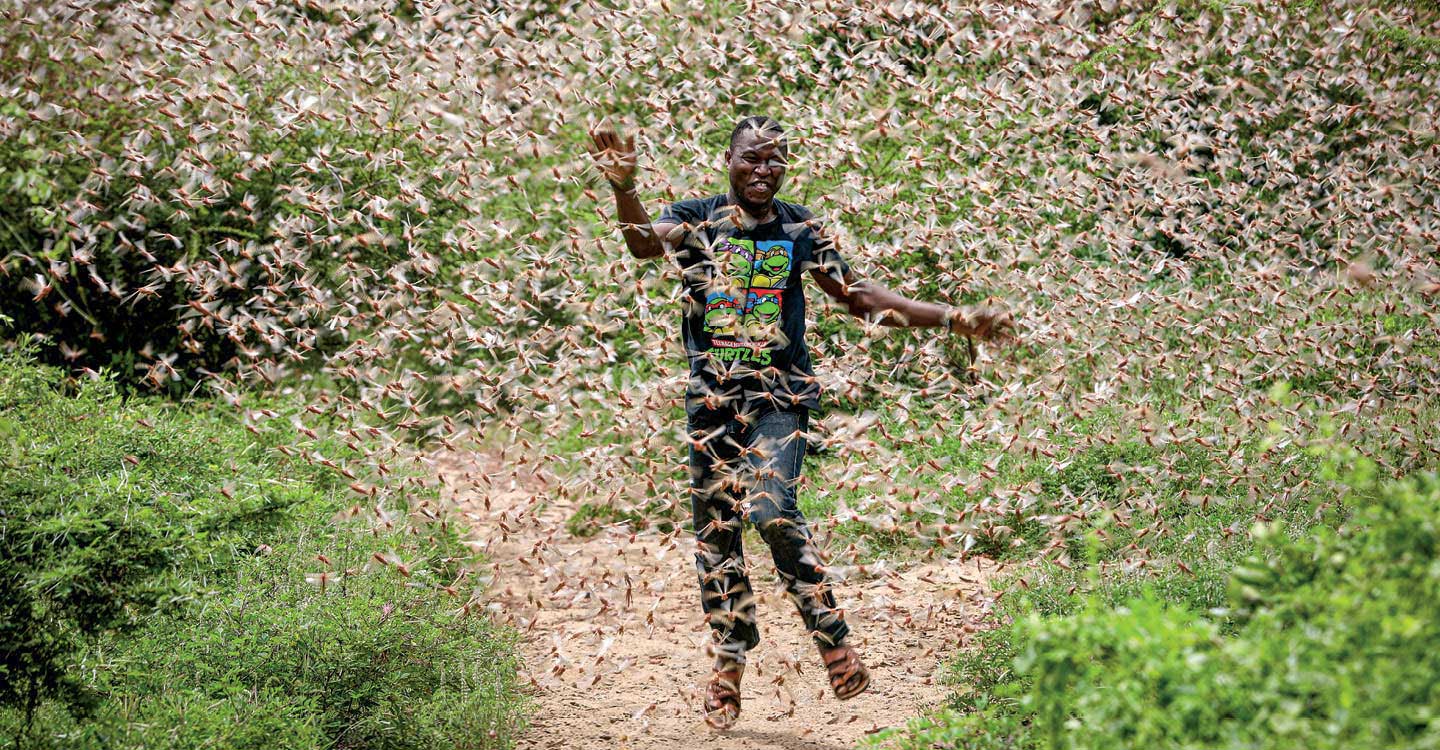Jim McMahon
Swarms of locusts are wreaking havoc in East Africa. Unusually wet weather has resulted in billions of the grasshopper-like insects in Kenya, Ethiopia, and Somalia—and South Sudan and Uganda could be next. The bugs, which reproduce in moist conditions, are devouring crops at an alarming pace; in one day, an average swarm can destroy enough food to feed thousands of people. And in a country like Kenya, where millions already face food insecurity, the situation has quickly become dire. It’s the worst locust invasion the country has experienced in 70 years, and if left unchecked, swarms could grow 500 times bigger by June, according to experts. That’s why the Food and Agriculture Organization of the United Nations (F.A.O.) is calling for $70 million to increase aerial pesticide spraying, the only effective method for combating the locusts. And special attention will need to be given to those who have lost all their crops, officials say. “Alongside pest control activities, our response must include efforts to restore people’s livelihoods,” says F.A.O. Director-General Qu Dongyu. “We need to help them get back on their feet once the locusts are gone.”

